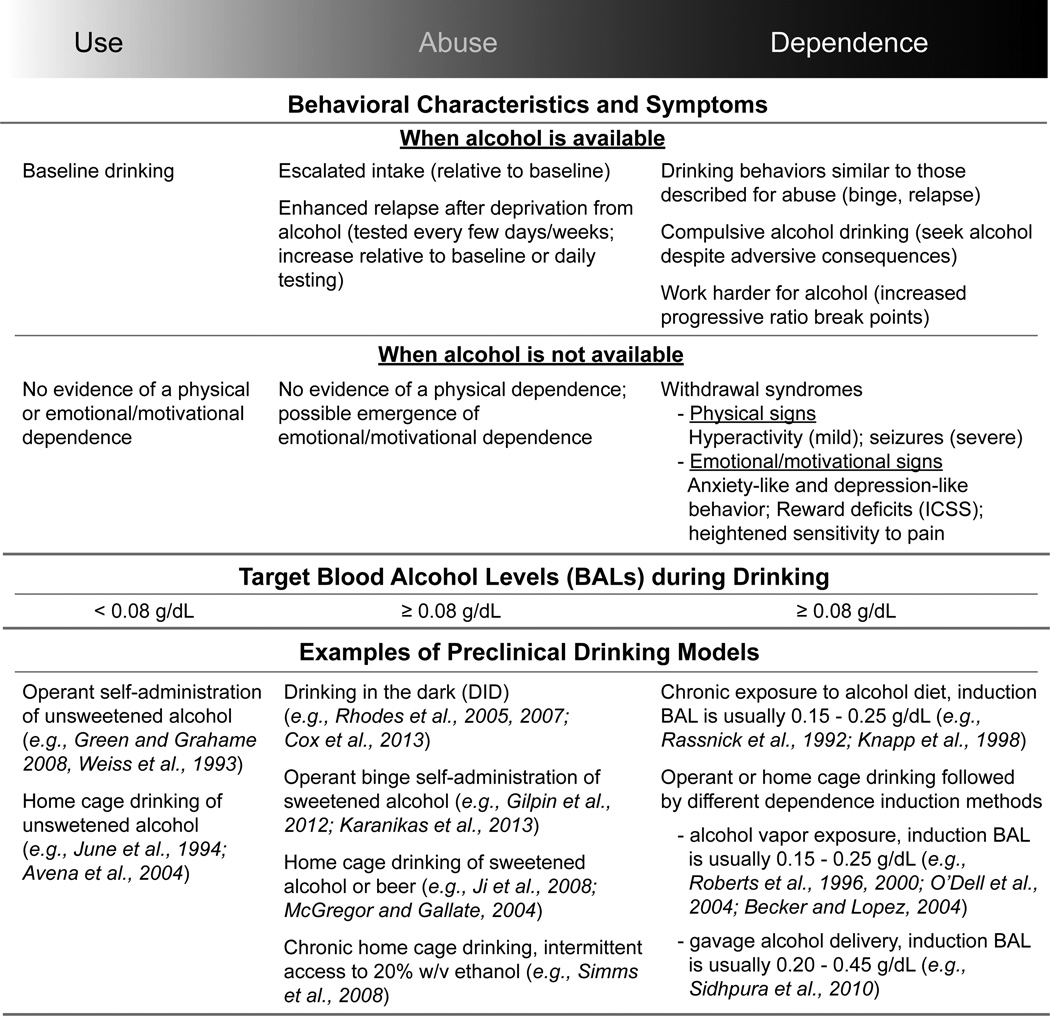Fig. 1.
An overview of preclinical rodent models capturing different drinking behaviors in the early (Use), mid (Abuse), and late (Dependence) stages of alcohol addiction. Behavioral characteristics and symptoms are described for each phase under conditions when alcohol is available versus conditions when alcohol is unavailable (withdrawal). The blood alcohol levels reached during a drinking episode differs as well, with use always remaining below the “binge” limit (0.08 g/dL) during the Use phase, but exceeding this level during the phases of Abuse and Dependence. We have provided a few examples of models used to capture drinking behavior at each phase, but it should be noted that this is not an exhaustive list. Abbreviation: ICSS, intracranial self-stimulation.

